Ben • • 14 min read
The Ultimate Beginner’s Guide to Yoga
Consciousness & Meditation Health & Fitness Psychology & Happiness

“The body is stimulated by proper exercise, which both strengthens and relaxes. We all must travel a long distance in this physical body. If we do not care for it, how can we reach our goal?”
― Swami Kripalu
For a long time I knew that a regular yoga asana practice would do wonders for my body and mind, but I had no idea where to start.
At the end of every yoga class I would feel damn good. I would be at once vibrantly energized while also more relaxed than I knew was possible! I wanted to bring these states to my daily life, instead of just experiencing them on that odd day of the month when I would happen to go to a class.
It’s becoming well established that a regular yoga practice has a wide array of health benefits. Do a quick search on the internet and you’ll surely find studies like these:
- Yoga can help alleviate chronic pain conditions, and is demonstrated to be effective in addressing back pain.
- Yoga helps regulate and reduce stress.
I knew I wouldn’t be able to memorize the sequence of an entire class and repeat each posture with care and precision. A smaller practice would have to do. But where to begin? Which poses was I supposed to choose?
I felt unsure about how to create a balanced, effective yoga practice on my own. I tried putting together a couple of random poses that felt good, but I could never replicate the glowing feelings and lightness that came with a class. That is, until I stumbled across a practice-building principle in the awesome book Kripalu Yoga by Richard Faulds:
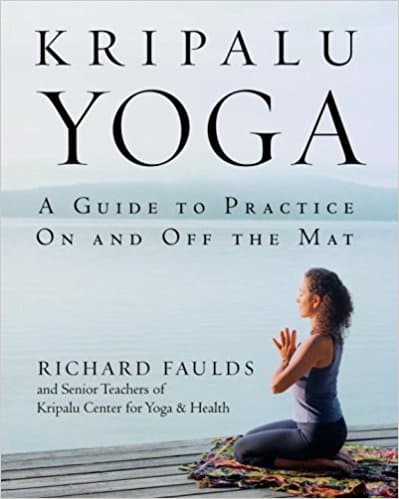
Kripalu Yoga: A Guide to Practice On and Off The Mat by Richard Faulds
Kripalu Yoga is the best introduction to yoga I have ever found. It has clear, straightforward directions on how to properly perform postures and create practice sequences. At the same time it is comprehensive, covering wide territories of yoga practice in detail. If you’re new to yoga, and particularly if you want easy-to-follow directions on how to build your own practice, this is the book you need the most:
I have a minor case of scoliosis (curvature of the spine) and some old injuries from skateboarding, snowboarding, and long-distance running. This stuff used to cause me a good deal of pain. I would skate rarely, and would always regret the soreness afterward. I couldn’t walk for more than 20 or 30 minutes at a time without a sore lower back. Bending over started to become tedious.
I’m only 23 years old, and I used to worry a lot about chronic pain getting worse as I age. Now, after a year of yoga practice based on this principle, I am confident that things will only get better.
So what did it? What principle did I apply to build an awesome yoga practice?
The 6 Directions of Spinal Movement
There’s a saying that goes: “You’re only as old as your spine”. The spine is the centerpiece of a well-functioning body.
With this in mind, it makes sense to build a yoga practice that makes the spine healthier. A practice that focuses on optimizing spinal movement will be potent.
As you’ve read, I have a condition of the spine which makes me prone to injury and soreness. Yoga has helped me in ways that were unimaginable before I began practicing. But what about the average person? Is a spine-centered yoga practice worth the time for someone who doesn’t have any back issues?
Hell yeah it is! Back problems are abundantly common in old age, so cultivating health of the spine just might be the best gift you give your future self.
Now, for your present self, a healthy spine will form the foundation for a healthy body. You could have the strongest arms in the world, but a back injury will still bring your furniture-moving days to a halt. You could have legs that will walk forever, but you won’t climb any mountains with back pain.
A spine which is both strong and supple is the best support for any physical endeavor. The spine is involved when you run a marathon and when you get out of bed to go pee at night. The spine is involved when you play rugby and when you bend over to get something out of the fridge.
Are you an athlete interested in using yoga to improve high-level performance? Make your spinal functioning excellent, and results will follow. Are you someone who loves to relax on a comfortable couch? Spend time moving your back every day, and you’ll be able to chill pain-free for years to come.
“Healthy plants and trees yield abundant flowers and fruits. Similarly, from a healthy person, smiles and happiness shine forth like the rays of the sun.”
― B.K.S. Iyengar
In Kripalu Yoga by Richard Faulds, there’s a chapter titled “Creating Posture Sequences”. It’s about how to create an excellent series of yoga postures. These few sentences from the chapter changed my body:
“Focused time is spent on strengthening the core muscles of the torso that support the proper alignment of the spine. Every Kripalu Yoga sequence includes the six movements of the spine: backward bends, forward bends, lateral stretches of both sides, and twists that rotate the vertebrae right and left. A balanced mix of these movements is yoga’s prescription to maintain the natural curvature of the spine.”
Here are some images demonstrating each spinal movement:
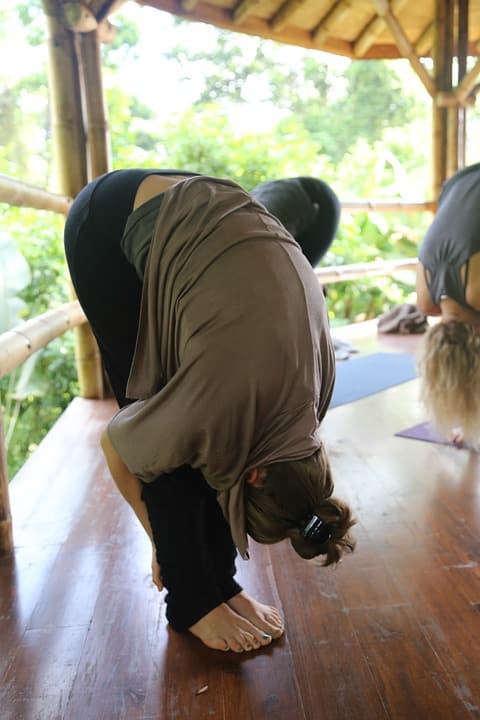
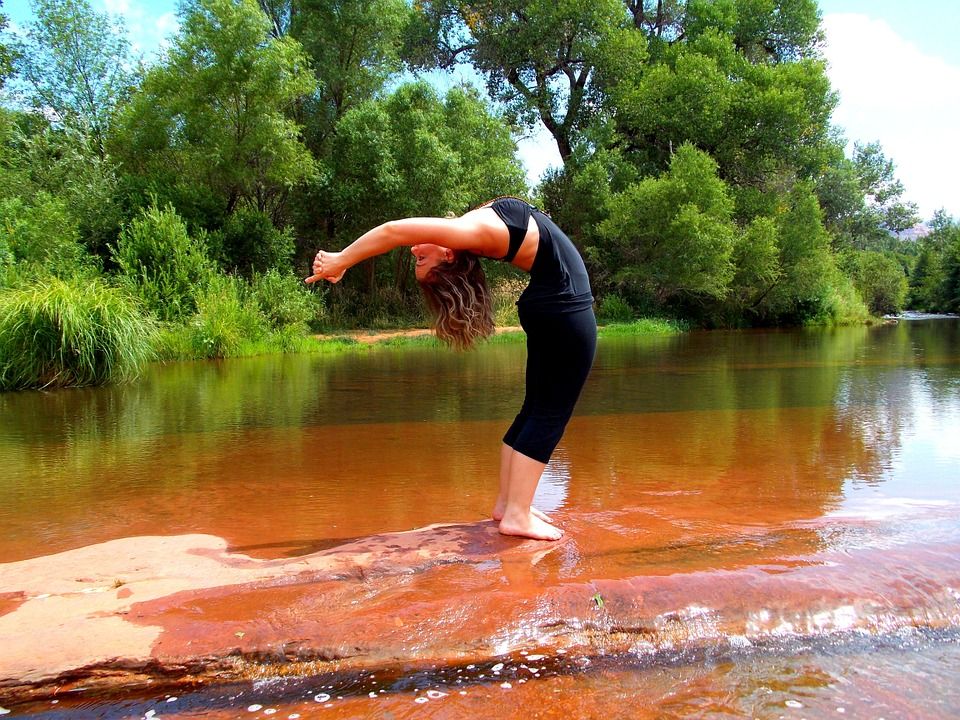
Lateral Stretch of the Side:

Twist Rotating the Vertebrae:
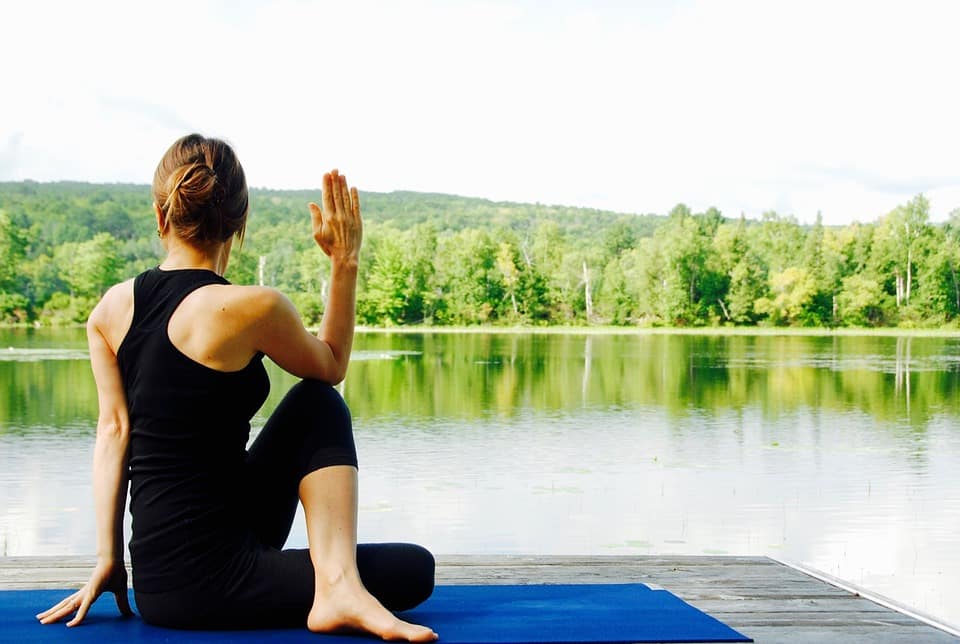
I never attended a Kripalu Yoga class, but I used this formula to build my own practice. And it worked damn well.
Many of my previous attempts at making my own yoga practice were unbalanced. They focused on stretches that gave my sore muscles relief. I’d do poses to relieve tension in my knees, hips, and lower back. It felt good, but I wasn’t working on my body holistically.
Through practicing these six movements of the spine, my core became stronger and my back started to relax. As this happened my problem areas seemed to heal themselves!
The places that hurt the most weren’t actually the sources of pain; they were the sites of the symptoms. They only got better once I improved the health of my core and my back.
A practice that worked on my body holistically, as opposed to just focusing on problem areas, was key to the results I experienced. Moving my back necessitated engaging other parts of my body. I learned how to use my whole body to support the movement of the back.
I found that I could guarantee a holistic practice by simply ensuring that my spine moved in the six possible directions: forward, backward, laterally to each side, and rotationally to each side.
Example Poses
The following is a list of poses good for beginners. Each one will move your spine in one of the six directions in which it should move during your practice.
You can create a potent yoga practice by simply doing just these poses. The videos provide great demonstrations and will be enough to get you started.
- Forward Bend:
- Backward Bend:
- Lateral Stretches of the Sides:
- Side Lean (Make sure to stretch to both the left and the right, doing so covers 2 of the spinal movements)
- Twists Rotating Vertebrae Left and Right:
- Thread the Needle Pose (Make sure to thread your needle to both the left and the right, doing so covers the last 2 of the spinal movements)https://www.youtube.com/watch?v=nNICdJLGuAw
4 Tips on Building a Successful Yoga Practice:
- Consistency – Make it a Habit
I can’t stress enough the importance of consistency. Doing an hour-long practice once or twice a week will make you feel good afterward, but it won’t yield any long-term or sustained results. But if you do just five or ten minutes every day, you’ll be surprised about what happens.
This is true for building any skill. Even if it’s just in tiny sessions, your total practice time accumulates quickly when you’re doing something every day. In yoga, you can learn a lot about your body and how to do your poses of choice this way.
Also, for the sake of sticking to your habit, it’s way easier to intentionally not overwhelm yourself with a huge commitment.
Perhaps eventually doing longer sessions will happen as part of a natural progression. But blocking off a larger chunk of time for a new activity may make you apt to choose not to practice at all when something comes up, or you actually don’t have as much free time and energy as you expected.
So at first, make a tiny commitment, but make a commitment to actually do it every day. Do it at the same time every day. Find a 10-minute period when you’re guaranteed to have the time. For me it’s the morning immediately after waking up. Find your time, and do a tiny bit every day.
- Bring Mindfulness to the Practice
The real power of yoga lies in the opportunity to practice mindfulness of movement, and thereby get to know your body better.
Part of the reason yoga postures were developed was to help people cultivate healthy bodies. But the spiritual traditions out of which yoga sprouted ultimately had their eye on something else: inner transformation and the awakening of new forms of awareness.
Luckily, these two things go hand-in-hand. Yoga postures are intended to call attention to your body in ways that you normally don’t throughout the course of your day, or during other more intensive exercise. Moving slowly into and out of these various positions teaches you about where you chronically hold tension, where you’re relaxed and loose, where you’re strong and weak, where you tend to hold your breath, et cetera.
“Action is movement with intelligence. The world is filled with movement. What the world needs is more conscious movement, more action.”
― B.K.S. Iyengar, Light on Life
As you pay attention to these things, you refine your posture technique in accordance with what you learn. As your awareness of your physical self deepens and expands you improve your yoga practice and learn to use your body in better ways.
After a while you begin to notice how your habits of posture and movement play out in your life outside of yoga practice.
That knot in your back you learned to let go of in downward dog shows up while you’re on the couch, and you can relax the tension because you’ve practiced doing so before.
You’ve practiced spreading out and grounding your whole foot during a lunge pose. With a strong base, your whole posture has a better foundation for standing and the chores of daily life take less energy.
- Using the Breath as a Mindfulness Touchstone
A great way to establish awareness during yoga is to be very deliberate about when you breathe: link movements with breath as part of the routine.
The purposeful regulation of the breath is just as much a part of yoga practice as doing the postures themselves. To bring awareness to the breath is to explore a new frontier of your being.
It also happens to be an excellent way of establishing mindfulness in your body. Your breath is a physical phenomenon, and your experience of it a physical sensation. The quality of your breath is intimately intertwined with the state of your body. Keeping attention on the breath acts as a powerful medium for sensing your physical self.
“Breath is the bridge which connects life to consciousness, which unites your body to your thoughts. Whenever your mind becomes scattered, use your breath as the means to take hold of your mind again.”
― Thich Nhat Hanh, The Miracle of Mindfulness: An Introduction to the Practice of Meditation
In short: if you stay with your breath, you’ll stay with your body.
To stay with your breath, practice slowly while ensuring that all of your movements are done with a deliberate inhale or exhale.
I inhale or exhale during every posture transition. That is, anytime I’m moving into or out of a posture, I know specifically whether I’m supposed to be inhaling or exhaling for that transition. Kripalu Yoga includes notes on when to breath in and out for an extensive amount of postures, and was very useful for me while learning my breathing sequences.
I still sometimes lose mindfulness and breathe at the wrong time, or inhale when I should exhale. Don’t feel like you need to get it perfect right from the start. Take your time learning the right breathing sequences for a small number of postures, then go from there.
The most important point here is that the attempt to keep close track of your breath will help coax your mindful awareness to the body.
- Taking Time to Get to Know Poses
It’s helpful to strike a good balance between taking time to get to know a pose versus switching up your routine to try new things.
Especially if you’re brand new to a yoga habit, for the first week of your practice commit to just doing enough to hit the six movements of the spine. Choose a minimum number of poses needed to accomplish this, and do those same poses every day.
This way you won’t be overwhelmed with a super long practice, making you much more likely to follow through on your new habit.
The really awesome benefit, though, is that you’ll get to know those poses well.
“There’s no value in digging shallow wells in a hundred places. Decide on one place and dig deep. Even if you encounter a rock, use dynamite and keep going down. If you leave that to dig another well, all the first effort is wasted and there is no proof you won’t hit rock again. (52)”
― Swami Satchidananda, The Yoga Sutras
Since you’re doing so few poses, you’ll be able to take your time doing them. You can pause to take a couple breaths during a pose. If you find extra time, the postures could be repeated a few times each.
Knowing a pose well reveals a lot about your body. As you start understanding more about a pose through investigating how it feels, you learn new ways of engaging your musculature. You might feel how adjusting your hip makes it easier to bring your leg in a new direction, and then that frees up a leg muscle to activate and strengthen.
The thing is, you’re only going to encounter those moments after doing a pose several times. The more times you’ve done a movement the closer you get to a moment of learning.
Take your time getting familiar with a select few poses.
But then, after a while, do something different!
You don’t want a practice that feels as if it has stagnated. If the inspiration to stick with your yoga habit wanes, it may be a sign that you feel bored with your practice.
Take this excerpt from Page 318 in Kripalu Yoga:
“As a once-cherished routine goes stale, it becomes hard to keep your mind focused and engaged. When boredom sets in, your love affair with yoga can start to feel like a rut. This is why experts recommend that you alter an exercise regimen every six weeks, the approximate time it takes the body to adapt to a new routine….
… Learn new postures that work different parts of the body. Hold the postures you already know a little longer to ramp up your intensity. Vary the order and manner in which you do things to open doorways into greater spontaneity and self-expression.”
If you really want to stick with the same practice for more than six weeks, then go for it! If you feel that after three weeks you’re ready for something new, follow your gut! Make the choice that keeps you interested and motivated.
But always look for a good middle ground. A stale practice that you’ve repeated for too long starts to feel like a chore. Doing new things all the time can overcomplicate practice, and fails to take you deeply into any particular posture.
Every six weeks, evaluate how engaged you feel with yoga. Ask yourself if you could add variety or challenge to your practice. If changing something feels exciting, change it up!
Beyond Yoga for Beginners
Hopefully you will stay with the practice of yoga, and one day look to take things further. When it’s time, here are some ways to progress:
- Add new poses
One way to progress is to simply add more poses! Covering the six movements of the spine will ensure that you get the most basic essentials. But if you’ve been doing those for a while, then there are other postures excellent for building a potent practice.
Add poses to engage the core, the lower body, and the upper body. If you can cover those three in addition to the six spinal movements, then you’ll be rocking your yoga practice.
Two awesome poses for the core are Cobra and Waterwheel. Three for your upper body are Downward Dog, Plank, and Inverted Table. Lunge variations, Warrior Pose variations, Tree variations, and squats like Goddess will tone the lower body.
Check those out. Pick one for the core, one for the upper body, and one for the lower body. Start with the three of your choice, and your practice will already be exponentially more powerful.
- Hold poses longer
Another way to go further is to stay in your poses longer. Progressively spending more and more time holding each pose strengthens the body, allows you to stretch more deeply, and opens the opportunity to develop concentration and awareness.
The best way to time poses is with the breath. Counting by seconds will likely distract you, while counting breaths will amplify your mindfulness and help you keep track of how long you’ve spent in the posture.
Instead of trying to stay in a pose for twenty seconds, try to stay for three mindful breaths. When it’s time to step things up, go for four mindful breaths.
Progressing this way is great if you want more intensity but you still enjoy your established routine. If this is the case, then try to hold all of your poses for one more cycle of inhalation and exhalation. Next week, try for yet another.
- Find a more intense modification for a pose
Yoga poses can often be modified to either increase or decrease intensity. For example, a twist can be added to Lunge Pose.
Another common progression is building core and back strength with Cobra Pose, then eventually moving on to the more challenging Upward Facing Dog.
There are so many poses which have potential modifications, or which serve as building blocks for more advanced poses, that you likely already have a pose in your practice which could be intensified. Do some research and you’ll find a way to go further with what you already have.
- Explore yoga’s other dimensions
The breadth of the yogic traditions encompasses much more than just physical postures. Meditation, breath practice, ethical guidelines, and yogic philosophy are just a few appliances in yoga’s toolkit for the transformation of oneself.
There are three incredible books I would recommend for beginning a journey into yoga beyond the poses. These books are:
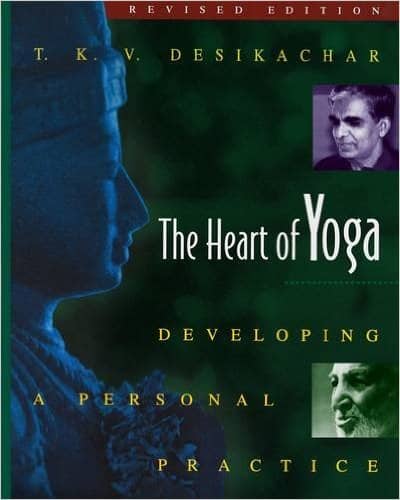
The Heart of Yoga: Developing a Personal Practice by T.K.V. Desikachar
The Heart of Yoga gives a broad view of the many different aspects of yoga including physical postures, breathing techniques, meditation, and other “limbs” of practice. It reads like a textbook, except it’s about something you’re actually interested in! If you want an informative, straightforward introduction to yoga then get this book.
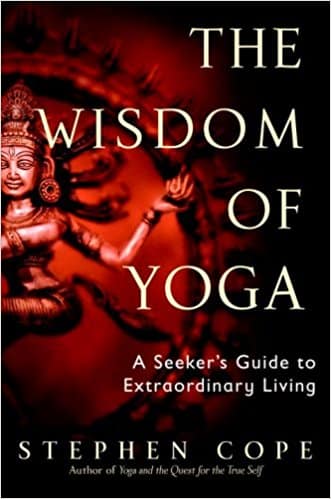
The Wisdom of Yoga: A Seeker’s Guide to Extraordinary Living by Stephen Cope
The Wisdom of Yoga paints a rich picture of how psychological change can happen through yoga practice. Stephen Cope tells personal stories from his relationships with several close friends who were practicing yoga to change their habits and themselves. Through these stories he elucidates the principles by which yoga operates to catalyze internal growth. An excellent introduction to the yogic perspective on personal growth, and the mechanics of how contemplative practice affects the mind.
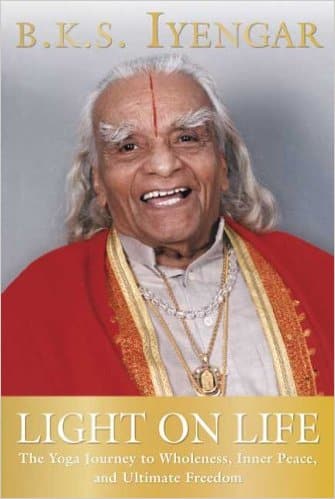
Light on Life: The Yoga Journey to Wholeness, Inner Peace, and Ultimate Freedom by B.K.S. Iyengar
Light on Life is a yogic treatise on how to live. It reveals the heart of yoga philosophy like nothing else I have ever read. Iyengar has an incredible talent to brilliantly communicate yoga to the western mind. If you’re interested in yoga philosophy, this one’s for you.
Go Practice
The Yoga Sutras of Patanjali, one of the esteemed yogic texts, begins with something like: “Now, the practice of yoga”. That’s because anything you do to help yourself and others is only done in a now moment. Anything you ever do is only ever done in a now moment. You just finished this long article about yoga, clearly you’re interested, so go do it! Start right now.










